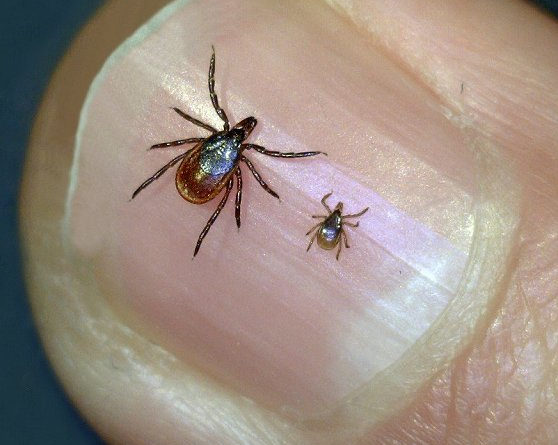13 Mar The History of Ticks in New England
If you are a New-Englander, yearly warnings about the rampant tick population in the region and hearing methods of protecting yourself from Lyme disease on the local news are likely a normal part of your life. You probably think about ticks and the dangers they present whenever you are adventuring outdoors, especially at the end of those adventures when you finally retire and search your skin for any unwelcome visitors.



Approximately 14 U.S. states contain 95% of all cases of Lyme disease, and the six states comprising New England are among them. However, Connecticut is Lyme disease’s state-of-origin. The symptoms of Lyme disease and Lyme arthritis, including severe headache and neck stiffness, rashes, joint pain, swelling, and an irregular heartbeat, were first observed in this state in 1975, and the disease is even named after the town in Connecticut where it was first discovered over 45 years ago. One of the truths of living in Connecticut is that we must still work to prevent individual transmission of the illness—from tick to human—to prevent the number of cases each year from increasing. Lyme disease diagnoses in Connecticut are still very common today, as physicians are still engaging in considerable studies and tests to find adequate treatments or vaccines for the disease.
But there is a benefit to the decades of study on Lyme disease: the more we learn about Lyme disease, the more we learn about the insects that host the disease. Ticks are arachnids and are considered external parasites, meaning that they attach themselves to warm-bodied animals (including humans). Ticks have been observed in fossil-form with periods of existence as early as the Cretaceous period, and ticks generally have four stages to their lifecycle: egg, larva, nymph, and adult. Even larval-stage ticks are dangerous, and it is not only because of their size (barely 1mm). Many breeds will require extracting blood from a host during their larval stage to progress to the next stage of their life cycle. However, the most dangerous stage of a ticks life is the nymph stage, as this is the most active phase of the tick’s life during which time they carry the highest risk of tick-borne illness.
The most common breed of tick found in New England is the black-legged tick, more colloquially known as the deer tick. The deer tick population tends to thrive in climates that are both warm and humid, making New England an ideal location for them in the summer. This also means that yearly fluctuations in temperature or humidity—a changing climate—can directly affect the number of cases of Lyme each year, as a dryer, cooler summer could see a significant decrease in the tick population in the affected region. Ticks are active in New England beginning as early as May, with June and July being peak months for contracting tick-borne illness. Adult ticks can even remain active throughout the winter, though the winters months in New England carry the lowest risk of tick-to-human transmission of illness. Approximately 1%-5% of deer ticks are carriers of Lyme disease.
The places that make New England an idyllic place to summer are also the places where ticks are known to inhabit. The beautiful forests, fields, and mountains of New England are likely to be host to the insect, and anywhere where plants or grasses grow could be a place where you’d encounter a tick. If you are near the coastline, ticks can also live in the sand, thriving in the dunes and in any area containing significant amounts of brush. The coastline is a commonplace to contract Lyme disease because many assume that a tick could not survive near the ocean, so extra precautions taken before, during, and after your summer beach day are important if you are seeking methods of being more tick-conscious.
If you are venturing outdoors in New England, particularly in the summer, you should be aware of ticks and the potential risk that they carry, but ticks should not deter you from enjoying the beautiful landscape of the region in the summer. There are many simple ways of deterring the insect, including wearing higher socks or longer pants, wearing lighter colored clothing to make ticks easier to spot, checking your full body carefully after each outdoor adventure, or using an EPA-registered insect repellant such as DEET. Incorporating these simple tick-repelling tactics into your summer plan could make all the difference, giving you peace of mind as you enjoy the warm weather and all that the beautiful region of New England has to offer.
Contact Neverdousky Brothers today for all your tick control needs!



